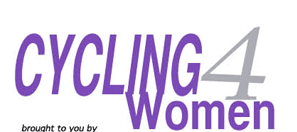October 23/09 11:51 am - WADA Releases 2010 Prohibited Substances List
Posted by Editor on 10/23/09
The Canadian Centre for Ethics in Sport (CCES) would like to alert the Canadian sport community that the World Anti-Doping Agency (WADA) has released the 2010 Prohibited List, which comes into effect January 1, 2010. This advisory details some of the major changes to this year's list.
Pseudoephedrine, a common ingredient in over-the-counter cough and cold medications, is back on the list. The stimulant is prohibited in-competition only at a urinary threshold of 150 micrograms per millilitre. WADA advises that athletes could generally take the maximum daily therapeutic dose of 240 milligrams and not exceed the threshold (see link below). However, to minimize their risk, athletes should stop taking this drug 24 hours prior to an event and should prefer alternate medications which do not contain pseudoephedrine.
Salbutamol and salmeterol are no longer prohibited when administered by inhalation, but require a declaration of use (see below). All other beta-2 agonists, including terbutaline and formoterol, are still prohibited and require a therapeutic use exemption (TUE).
Salbutamol is still prohibited by other routes. If the urinary concentration is above 1,000 nanograms per millilitre, there will be a presumption that it was not taken by inhalation and the athlete will have the burden to demonstrate through a controlled study that the level found in his/her urine was the result of therapeutic inhaled use.
The use of platelet-derived preparations or "blood spinning" is clarified. These preparations will be prohibited when administered by the intramuscular route, and all other routes will require a declaration of use.
Additional examples of growth factors are added. These factors affect muscle, tendon or ligament protein synthesis/degradation, vascularisation, energy utilization, regenerative capacity or fibre type switching, and include Platelet-Derived Growth Factor (PDGF), Fibroblast Growth Factors (FGFs) and Vascular-Endothelial Growth Factor (VEGF).
Proteases, enzymes used to break down proteins, are added as an example of a method for adulterating a urine sample.
Intravenous infusions are clarified. Intravenous infusions are prohibited except for those legitimately received in the course of hospital admissions or clinical investigations.
• An intravenous injection is the supply of a small volume of fluid or medication, in a rapid manner, by means of a simple syringe.
• An intravenous infusion is the insertion of a specialized needle into a vein and the infusion of fluids at a predetermined rate from a reservoir, usually above the level of the body.
For substances that require a TUE or a declaration of use, athletes subject to doping control should consult the CCES or their international federation to get complete information on the application and declaration processes. The CCES will publish full information on the TUE and declaration of use processes for 2010 in the coming months.
In addition, athletes selected for doping control must remember to declare the use of any prescription or non-prescription medications and nutritional supplements taken in the preceding 10 days when asked by the doping control officer.
Athletes can verify the prohibited status of their medication using the following CCES resources, all of which will be updated on January 1, 2010 to reflect the new Prohibited List.
• Global DRO (www.globaldro.com)
• CCES Substance Classification Booklet (www.cces.ca/substances)
• Email substances@cces.ca
• Call the Info Line at 1-800-672-7775
The CCES is an independent, national, non-profit organization. Our mission, to foster ethical sport for all Canadians, is carried out through research, promotion, education, detection and deterrence, as well as through programs and partnerships with other organizations.
Further reading:
World Anti-Doping Agency Prohibited List web page (including the 2010 list, summary of changes, and explanatory note): www.wada-ama.org/en/dynamic.ch2?pageCategory.id=815
Related Photo Galleries
| Return to Cycling 4 Women homepage | Return to Canadian Cyclist homepage | Back to Top |


